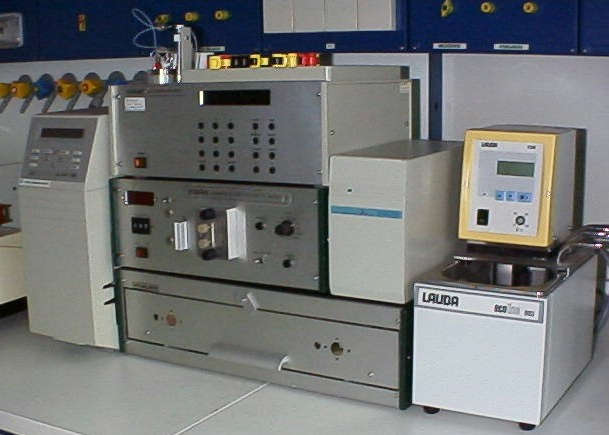| method | Sulfate and chloride are detected using a HPLC system with an anion separation column and indirect UV-detection. The eluent has a high UV adsorption which is "diluted" by chromatographically separated ions. Detection is performed at approximately 288nm. Chromatograms examined by integrator or PC-integrator. |
| setup | 
|
| pump | Thermo Separation Products P100 |
| flow | 2 ml/min |
| detector | KNAUER variable wavelength monitor @ 288nm |
| autosampler | KNAUER Autosampler 7500 |
| column | WESCAN Anion-R 10 Ám, 250 x 4.1 mm |
| capillary | UPCHURCH, 1.6x0.5 mm I.D PEEK |
| peak integration | KNAUER Eurochrome 2000 software and interface box (1V integrator output to RS 232) |
| solutions | |
| eluent | KHP potassium-hydrogen-phtalate, 3mM, pH 6.8, methanol (p.a.) 5ml/L added for sterilization |
|
standard stock |
seawater standard (Cox & Culkin 1966) |
| work standards | standards with lower concentration are prepared by diluting seawater standard with sulfate-free artificial seawater. |
| sample dilution | both samples and work standards are diluted 1 : 20 with pure water |
| retention time | approx. 8 min for sulfate |
| analysis time | approx. 10 min per sample |
| tips + tricks | standards have to be adjusted to expected concentrations. Chloride is measured but usually only used for correction. Other anions are below detection limit due to chloride peak tailing and 1:20 dilution necessary for sulfate detection |